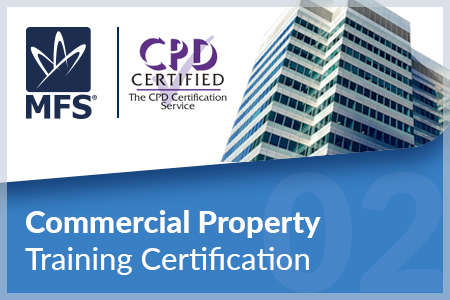CPD Training Course

Lesson Overview
Market Financial Solutions’ CPD certified HMO course serves as an essential guide for brokers whose clients are entering the realm of House in Multiple Occupation (HMO) properties. Covering fundamental aspects such as HMO classification, legal obligations, landlord responsibilities, and financial considerations like rental yields and financing options, this course provides a detailed insight. Whether you are a novice or an experienced broker, the course equips you with the knowledge to aid you in navigating the intricacies of HMOs successfully. Elevate your understanding of HMOs and confidently manage clients investing in these unique rental properties with insights gained from this comprehensive HMO training course.
Earn 2 structured CPD hours online.

Learning Objectives of This HMO Training Course
- Understand what an HMO is, and how these properties differ to standard buy-to-let properties.
- Learn what regulations HMOs abide by and why it is important to follow these.
- Understand costs that should be considered when purchasing and running an HMO, and how to work out different rental yields.
- Highlight different financial options available for these property types.
- Outline what specialist finance is and how it can be used to assist property investors interested in purchasing HMOs.
Watch the Video
Welcome to Market Financial Solutions’ training video on HMO properties. Stay tuned to learn the basics that you need to know when working with clients who are investing in this property type
Before we begin. please ensure you have a calculator and note-taking equipment ready as they’ll be essential for completing today’s training.
So, let’s get started.
What is an HMO?
A “House in Multiple Occupation”, or “HMO” is a property let out to several tenants who may not be members of the same family, and who share certain facilities within the property. A property will be classed as an HMO if it has at least 3 tenants living there, forming more than one household, who share a bathroom, kitchen, and toilet facilities.
These properties are also often referred to as “house shares”. If your clients rent out a property to 5 or more tenants, who share facilities, their property will be considered a large HMO, and they’ll need to obtain a license from the local authority.
Although, some areas may still require licenses even for smaller HMOs. The rules and regulations that HMO landlords will need to follow will likely vary between councils.
In terms of property types, there are many options open to HMO investor clients. Popular examples can include bedsits, hostels, and student accommodation.
So, why invest in an HMO?
There are lots of incentives for clients considering HMO investment since it can come with a host of advantages.
For example, a PRS report for the first quarter of 2023 in England shows HMOs generate the best yields for residential property at 6%, versus 5.3% for houses and 5% for flats and bungalows. And this research shows HMO yields around the UK varying from around 6% to 9%.”
As well as this, other advantages can include:
- High tenant demand. This is driven by the lower cost of rent for individual tenants, often making this type of housing particularly sought after. The growing popularity of HMOs can therefore provide landlords with increased flexibility when selecting tenants.
- As there are multiple tenants living in an HMO property, void risk could potentially be lowered. This is because if one tenant moves out, the others still living there will be able to cover the rent whilst the landlord searches for a new tenant.
- Clients can gain economies of scale in furnishing and maintaining properties with HMOs as well. Unlike a single tenant in a flat who would need individual appliances, HMOs can allow multiple tenants to share one set of facilities, therefore reducing the need for multiple purchases.
- Investing in HMOs can simplify the process of choosing tenants to target, especially in university towns which are popular among students and young professionals. Identifying specific locations with a concentration of students could help clients narrow down options and conduct pre-purchase research more efficiently.
- HMOs may enable clients to diversify holdings beyond other rental property types, offering protection against asset-specific downturns. For instance, if commercial properties face income challenges, residential HMOs with anticipated premium yields can potentially provide a buffer.
- And finally, despite housing market fluctuations, HMOs, with their lower tenant costs, tend to stay in high demand. This can make them attractive for potential resale, especially in student-heavy areas where other landlords can be eager to acquire the properties should clients wish to sell.
There are a few things for clients to consider, however, before investing in an HMO
As well as there being a host of advantages for investing in HMOs, there are also things that clients may want to consider before making any concrete decisions.
- Initially, there are likely to be high entry costs in comparison to other kinds of buy-to-let investments, with research in July 2023 revealing that the average HMO property value in London was £863,000, significantly higher than the average property price of £534,265 across all types in the Capital.
- Ongoing costs can also be more sizable in HMOs in comparison to other BTL property types, this is due to the fact that the landlord will likely have more people living in the property. So, it could raise the chances of accidental damage, and the durability of household items could deteriorate more quickly than average rates.
- Finally, it can be slightly more difficult for clients to obtain finance for an HMO, and this is because mainstream lenders may require previous landlord experience before providing long term HMO finance.
Becoming an HMO landlord
First-time landlord clients, or those purchasing their first HMO property, may find it best to start by doing their research. A great place to start would be to look into the area they’re thinking of investing in, so as to get an idea of whether there’ will be demand for their property there.
The following questions should be considered:
- Are there already HMOs in this region?
- What is the average rent for the property size in the area?
- What age ranges are currently HMOs targeting? – 18-25, 26-35 or otherwise
- Is there a large student or young professional population?
By doing research, clients should find it easier to determine how their investment may fare in that local market. After considering this, they can align their rental strategy accordingly. Once they’re happy with the location they’ve targeted, they can identify the right property for their circumstances.
There are lots of options available to clients here, such as:
- Searching big property sites like Zoopla or Rightmove
- HMO focused marketplaces such as AgentHMO
- Auction houses can often offer suitable properties, and
- Conversion opportunities in the commercial market
In terms of licensing, the Housing Act 2004 is one of the primary pieces of legislation that affects HMOs in England. This act determines which HMOs end up being subject to Mandatory licensing. To determine if an HMO requires mandatory licensing, it must meet one of the following: a standard test, a converted building test, and self-contained flat test with certain exemptions.
Landlords must also be “fit and proper”, while more generally adhering to several responsibilities, such as keeping their properties safe, making repairs where required, and managing rental increases in line with a tenancy agreement.
For clients investing in an HMO, rental income will be key in determining an investment’s success. While assessing any investment will be multi-faceted, calculating the rental yield for your property will likely be the guiding starting point.
Rental yield calculations fall into two categories:
gross rental yield and net rental yield. In a nutshell, gross rental yields take into account everything before expenses, while net rental yields cover what’s left after expenses.
For a gross rental yield calculation, you take the property’s yearly rent, divide it by the property’s value, and times the result by 100. Say the property is worth £300,000, and will be rented out for £500 a week, or £26,000 for the year. The calculation will be: £26,000 / £300,000 x 100 = 8.6%.
To calculate a net rental yield, annual costs such as insurance and upkeep will need to be factored in. So here, take that annual rental income, subtract the annual costs, leaving the net rental income. Using the same example as before, the calculation will be: £26,000 – £6,000 (the annual costs) = a £20,000 rental income.
Then, you take that net rental income, divide it by the property value, and times the result by 100 to get the net rental yield. So: £20,000 / £300,000 x 100 = 6.6%.
The rent your clients’ tenants pay will likely need to be clearly set out in a tenancy agreement. This is a contract between your client and their tenants which will break down the rules that will need to be followed, along with the legal terms and conditions of the tenancy. A tenancy can be split into either fixed-term, or periodic agreements.
Within these two groups there can be several sub-categories of tenancies. The most common being assured shorthold tenancies (ASTs), but there are also excluded tenancies, joint agreements and more.
In terms of the differences between HMO purchases, and other BTL investments, council tax will be one of the key differentiators. Generally, BTL investors do not need to pay council tax but if they’re the landlord of a HMO, they will need to pay the levy. Council tax rates will vary between local authorities, although it should be noted that discounts and exemptions may be available.
Grab your calculator for our first quickfire question. If your HMO property is worth £500,000 and makes £50,000 annually in rent, what is the gross rental yield?
The answer is 10%, the calculation is: £50,000 (the rent) divided by £500,000 (the value of the property) multiplied by 100, which equals 10%.
The Legal requirements of HMOs
There are many laws and regulations that can affect your clients if they become landlords, but if they own or manage an HMO in England, they must comply with The Management of House in Multiple Occupation (England) Regulations 2006. These rules outline the basic responsibilities that HMO landlords must meet.
The minimum duties they would have as an HMO landlord are:
- Providing information to occupiers
- Taking safety measures, including fire safety measures
- Maintaining the water supply and drainage
- Supplying and maintaining gas and electricity, including having it regularly inspected
- Maintaining common parts – fixtures, fittings, appliances
- Maintaining living accommodation and
- Providing waste disposal facilities
There are also a number of fire safety regulations they need to follow. These are some of the most important rules, and will likely vary between local authorities. Landlords can be expected to:
- Carry out written risk assessments, which need to be updated annually
- Install mains-powered, interconnected fire alarms
- Make sure the alarm system is maintained and in good working order and have a competent person carry out maintenance on the fire alarm system
- Provide evidence of the regular servicing of the fire alarms to the local council, on request
- Ensure the property is equipped with:
- Multi-purpose fire extinguishers on each floor in the common parts
- Fire doors, fitted with closers
- A fire blanket for the kitchen
- Appropriate locks on the main exit doors
- Clear display notices giving tenants instructions on what to do in the event of a fire
In October 2023, more robust fire safety regulations came into effect, they require landlords to:
- Carry out comprehensive fire risk assessments
- Incorporate emergency escape lighting
- Keep escape routes and fire doors up to scratch
- Install sophisticated smoke detectors
- Regularly inspect hot water and heating systems, as well as other things…
HMO finance options
There are many finance options available to clients looking to invest in an HMO. They may be able to utilise an HMO mortgage, which is a long-term product designed specifically for this kind of BTL investment. These mortgages may be marketed as HMO mortgages, or advertised as regular BTL mortgages that happen to allow investors to borrow against an HMO property.
These types of mortgages will often feature additional criteria that needs to be met, such as minimum property values, a maximum number of bedrooms, communal space requirements, and a minimum level of experience from the applicant.
Often, these mortgages are long-term products covering 25-35 years or so, with terms initially set up for 2, 3, or 5 years. Generally, mortgage eligibility adheres to a rigid tick-box lending criterion. Applicants must fit in within a narrow set of parameters, which can sometimes leave little wiggle room for property investors with complicated backgrounds.
This is where bespoke, specialist finance can come into play. Bridging loans and specialist BTL mortgages are short-term forms of finance designed to help borrowers move from one financial transaction to another, while long-term solutions are secured.
Specialist loans tend to be more flexible than their mainstream counterparts. Meaning they can accommodate missed payments, County Court Judgement (CCJ), overseas interests and other complications that may not be accepted on the high street.
Bridging loan terms generally sit between 3 – 24 months, although some lenders may offer loans that stretch to 36 months. They could also have flexibility in how they’re repaid. Bespoke lenders may offer rolled up interest, or deferred interest repayment plans, for example. Specialist BTL mortgages also combine some of the traditional elements of the mortgage market with bridging like speed and flexibility.
How do specialist loans work?
While processes will vary between lenders, there are generally a few shared key stages. Lenders will receive an enquiry, assess its merits, and determine if they can help. So long as everything falls into place, lenders will then issue funding to the applicant.
If we take Market Financial Solutions as an example, bridging loan applications follow a simple 5-step process. We receive your client’s initial enquiry, which will be responded to within 4 hours. We will then issue indicative terms, subject to credit committee approval and receipt of further information.
A decision in principle (DIP) will be issued by Market Financial Solutions once all of the required paperwork has been completed. Following this, valuations will be completed, due diligence will be followed, and any legal requirements are met. Beyond this, valuers and solicitors will be instructed to act, and commitment fees will be paid.
Finally, as we reach the final stages, legal paperwork is provided, the loan is issued for drawdown, and commitment fees are refunded.
For our specialist BTL mortgages, once we receive your clients’ initial details, we can categorize their deal into one of our 4 tiers which will determine the rates and terms available to them. If they’re happy to progress, we will then issue a DIP and move onto completing the valuation, much like the bridging process.
From here, the solicitors involved will issue contracts and get everything wrapped up on their end. Once everything is good to go, we will deliver funding for the BTL investment.
What needs to be remembered is that for both our bridging loans and BTL mortgages, all of this can be done in mere days from your client’s initial enquiry.
It’s time for another quickfire question. Which of the following is an example of additional criteria that could need to be met for an HMO mortgage? Is it:
- A maximum number of bedrooms
- A maximum tenant age, or
- Property location
The correct answer is A. A maximum number of bedrooms is an example of additional criteria that could need to be met for an HMO mortgage application .
Now, let’s move on to the next topic.
Will certain property details or issues in financial history affect the client’s loan?
Specialist finance is generally very flexible, and at Market Financial Solutions our underwriters are adept at finding creative solutions for a range of complications. Common examples include what’s already been mentioned: CCJs and missed payments etc.
However, we can also deal with more challenging or unique circumstances. This can include divorce settlements, bankruptcies, or business cashflow issues.
Broadly, the more complicated your situation, the higher your client’s rates may be. Although, we have a range of tools at our disposal to help with their affordability.
Are there any set questions clients should ask their underwriter?
Your client will have an assigned underwriter from day one, who will be there to cover every single detail of their case. They’ll be able to answer any questions they may have on costs, their options, and more.
Every case we deal with is assessed on its own merits. Meaning, what’s needed from our borrowers will vary from person to person. But what’s key is that your client is open with us from the beginning. Transparency allows our underwriters to get ahead of any potential problems.
Throughout, we will consider the wider economic picture, your client’s experience, and any additional assets they may have to support their deal and exit strategy. If you or your client have questions on any of this, we can be reached online, via email, or over the phone.
Congratulations! You’ve now reached the end of the training video. Thank you for tuning in to Market Financial Solutions’ HMO Property Training Certification! Don’t forget to test your understanding with the questions at the end. See you next time!
Market Financial Solutions are a bridging loan and buy-to-let mortgage provider and are not legal, financial, investment or tax advisers. This document is for informational purposes only and does not, and should not be considered, to constitute legal, financial, investment or tax advice or be relied upon by any person to make a legal, financial, investment or tax decision. Therefore, Investors are encouraged to seek appropriate professional advice. The information in this content is correct at time of writing.
Overview of this HMO Course

PART 1: What is an HMO?
00:00 – 01:02

PART 2: Why invest in an HMO?
01:03 – 2:59

PART 3: Other things to consider
03:00 – 04:00

PART 4: Becoming an HMO landlord
04:01 – 8:16

PART 5: Legal requirements
08:17 – 10:06

PART 6: HMO finance options
10:07 – 16:05
HMO Course Resources
- Guide: The Complete Guide to HMO Property
- Blog post: HMO bridging finance: How it can support your property investment plans
- Blog post: HMO Inspection Checklist: Compliance for Landlords
- Market Financial Solutions’ Let’s Talk Property Podcast, Episode #12: Maintaining control when managing HMOs
- Market Financial Solutions’ Let’s Talk Property Podcast, Episode #5: Financing HMOs – the future of buy-to-let?
- Case Study: Providing finance for an HMO property that needs refurbishment work
Accessibility
We want to make this a positive experience for all participants. If you have particular access needs (for example visual impairment, dyslexia, deafness etc.) please contact us at marketing@mfsuk.com so we can work together to get you as good an experience as we can.




